
|
|
 |
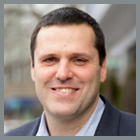
|
Alvaro Amorrortu view bio | back to agenda
Chief Operating Officer, Solid Biosciences
Manufacturing Challenges in Gene Therapy for DMD
A description of the journey that Solid Biosciences has been going through in its quest to find therapies for DMD patients. Exploring early technology platform choices, the selection of the appropriate partners to work with, and the strategy towards a commercially scalable process. |
 |
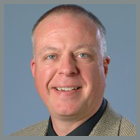
|
Chris Ballas view bio | back to agenda
Senior Director, Process Development and Commercializationr, WuXi AppTec
An Exploration of the Potential to Platform Different Cell and Gene Therapies
Every cell and gene therapy seemingly has its own individual process. With specific focus now on approvals for CAR-T products and the significant progress in other cell and gene therapies, expectations are high around development of automation for these processes in order to achieve commercial viability. Progress is certainly being made in this area. However, a single automation platform for all the different processes even just within the CAR-T products has significant challenges. Rather than design automation to fit a particular process, or even a particular product category, this presentation makes a case for processing cells within a platform on a product independent basis using a reductionist approach to processing intended to maintain product activity while decreasing development and tech transfer times. An example platform approach for one component of gene therapies is presented and an approach for creating a cell processing platform is proposed. The ability to platform cell processing should lead to greater opportunity to automate and maximize economies of scale. |
 |

|
Jon Chen view bio | back to agenda
Single-cell Evangelist, Solid IsoPlexis
Single T-cell Functional Response Biomarkers to Accelerate Decisions in CAR-T and Checkpoint Based Cancer Immunotherapies
Using IsoCode, researchers can capture data to determine the polyfunctional strength index (PSI), or functional strength, of individual T-cells, across thousands of cells at a time. By defining the T-cell functional strength, the PSI metric has predicted complete or partial patient response to CAR-T therapy or checkpoint-based therapies, with statistical significance. With the single-cell PSI, researchers are able to reveal functional subsets of CAR-T cells and the distinct secreted protein profiles of those CAR-T cells. IsoPlexis demonstrates data that shows that patients with highly functional T-cell subsets in vitro tend to have strong responses to CAR-T therapies in vivo, and the patients with inactive T-cell subsets have weaker responses. These single T-cell subsets, and thus sensitive patient differences, are missed when assaying patient sample with existing bulk immune profiling technologies. |
 |

|
Chia Chu view bio | back to agenda
Principal Scientist, Bioprocessing Research and Development, Pfizer Inc.
Intensifying Transient Transfection Production in HEK293 Cells to Expand Recombinant AAV Manufacturing Capacity
Recombinant AAV is a promising gene delivery method to treat monogenic rare diseases. Different manufacturing platforms are available to generate AAV vectors for clinical use. In the past decade, we have seen further development progress reported on each of the production platforms. However, regardless of the chosen platform, at the current reported vector genome titers manufacturing capacity can become a constraint for generating clinical trial material for indications that require very high vector dosages. Tasked with the challenge to drastically exceed the current recombinant AAV titer benchmark, our efforts are focused on leveraging state-of-the-art cell culture technology to intensify the triple plasmid transfection process and to push the production limits feasible with our proprietary suspension HEK293 cell line. In contrast to traditional cell culture development processes that use stably expressing cell lines, recombinant AAV production using transient transfection poses additional hurdles to process development due to the presence of three production phases that require distinct strategies. In this presentation, we highlight some of the upstream platform development initiatives to describe our approach to achieve a high yielding cell culture process and also analytical methodologies to understand any impacts from implementing the intensified process. |
 |
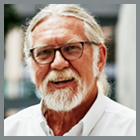
|
Robert Deans view bio | back to Panel | back to agenda Day 2
Chief Technology Officer, BlueRock Therapeutics
Development Perspectives in Advancing Pluripotent Stem Cell Therapeutics
BlueRock Therapeutics is a next generation regenerative medicine company developing therapeutics derived from induced pluripotent stem cells (iPSC). BlueRock has lead programs in cardiovascular disease, and ParkinsonÕs disease which will enter the clinic mid-year 2018. Discussion will focus on analytical and regulatory benchmarks central to qualifying new cell lines, and establishing a work stream for routine gene editing and line introduction. Approaches will be discussed which support broad allogeneic use of BR iPSC derived tissues. |
 |

|
Veronika Jekerle view bio | back to agenda
Quality Specialist and ATMP Topic Lead for Quality, Specialised Scientific Disciplines Department, European Medicines Agency
Regulatory and Scientific Considerations to Developing Cell and Gene Therapies - A Perspective from the European Medicines Agency
In Europe, Advanced therapy medicinal products (ATMPs) consist of gene therapies, tissue engineered products and somatic cell therapies (combined as ‘cell therapies’) and offer the potential to treat a range of conditions in disease areas where conventional approaches are often inadequate. To meet the challenges of these innovative and highly individualised products and to pave their way to reach the patient, the regulatory framework must be finely balanced and flexible enough to take account of the specificities, encourage further innovation and safeguard public health.
In the EU, a dedicated legal framework for ATMPs, Regulation (EC) No 1394/2007, has been in force since 2008. The Regulation also set up the Committee for Advanced Therapies (CAT), which brings together relevant expertise from across the EU to review applications for ATMP classification and certification, scientific advice, marketing authorisation and post-authorisation procedures. To support the development and assessment of ATMPs a number of scientific guidelines1 have been developed by the CHMP2 and CAT including the guideline for cell-based medicinal products, the reflection paper for stem cells and the guideline on genetically modified cells.
In this session, the challenges encountered during the past 10 years of assessment of gene and cell therapy products will be presented and scientific considerations for developers will be discussed with an emphasis on manufacturing aspects. A number of practical case studies will be presented. Finally, an overview of the available scientific guidance and the main entry points for interaction with the EMA on ATMPs will be shared with the audience.
|
 |
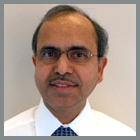
|
Bharat H. Joshi view bio | back to agenda
Staff Scientist, Tumor Vaccines and Biotechnology Branch, Division of Cellular and Gene Therapies,
Office of Tissues and Advanced Therapies, Center for Biologics Evaluation and Research, US Food and Drug Administration
Regulatory Considerations for Cellular and Gene Therapy Products
Abstract to come. |
 |
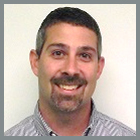
|
Jeff Kennedy view bio | back to agenda
Process Manager, Cell and Gene Therapy Validation and Lifecycle Management, GlaxoSmithKline
Managing Challenges to Supply Autologous Gene Therapies
In order to supply autologous gene therapy products to patients in need, a key decision is needed to determine how these products will be distributed. The decision can lead to the challenge of establishing additional manufacturing sites to allow for greater patient access. When setting up additional manufacturing sites, several challenges need to be addressed to demonstrate that the manufacturing processes are equivalent and produce comparable drug products. This talk will describe the challenges associated with technology transfer, establishment of product control strategies and demonstrating comparability across different manufacturing sites. |
 |

|
Stephen Kennedy view bio | back to agenda
Executive Vice President and Chief Operating Officer, Histogenics
Commercializing Tissue Engineered Cartilage: Technology and Regulatory Approval Strategy Case Study
Histogenics has developed NeoCart, an autologous tissue engineered cartilage construct for repair of articular cartilage defects. Histogenics completed a Phase 3 trial in the US, enrolling 249 patients comparing NeoCart to microfracture, the current standard of care. Phase 2 results are compelling, showing statistically and clinically significant improvements in pain and function scores for patients receiving NeoCart over microfracture and data from the Phase 3 study will be available in 2018, with potential BLA filing soon thereafter. Histogenics has engaged with PMDA in Japan through formal meetings to define a path to approval for NeoCart in Japan. Histogenics is actively negotiating with several commercialization partners in Japan, based on this clear regulatory path for approval.
Histogenics is developing allogeneic technologies to provide for lower cost of goods and improved logistics, enabling greater penetration of the cartilage repair market. Histogenics has developed iPSC-derived chondrocyte technology with Intrexon and produced cartilage constructs using this technology. Histogenics is also investigating MSC technology to manufacture allogeneic constructs. The regulatory and safety risks surrounding these allogeneic technologies are largely focused on immunogenicity and tumorigenicity. PMDA has issued clear guidance for evaluation of tumorigenicity and immunogenicity in preclinical studies necessary for clinical development of allogeneic product(s). PMDA also has a conditional approval pathway for regenerative medicine products, which potentially enables earlier commercial use of allogeneic technology. Histogenics plans to pursue approval of its allogeneic technology first in Japan followed by US.
The strategy to utilize autologous technology for initial product approval followed by implementation of allogeneic technology provides for early commercialization then greater market penetration and cost of manufacturing reduction. Utilizing most efficient regulatory pathways further supports most effective implementation of the strategy. |
 |
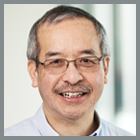
|
James Leung view bio | back to agenda
Senior Research Fellow, Center for Biomedical Innovation, Massachusetts Institute of Technology
The CAACB Virus Contamination in Biomanufacturing Project – Practical Lessons for Current and Emerging Biotherapeutic Products
Adventitious agent contaminations of cell culture-based biomanufacturing operations to produce protein biotherapeutics, including monoclonal antibodies, are infrequent. When they do occur, however, they are very costly, disruptive to manufacturing operations, and can potentially impact patient safety and product supply. In response to the need to better understand and control this risk, the MIT Consortium on Adventitious Agent Contamination in Biomanufacturing (CAACB) began the confidential collection and analysis of industry-wide viral contamination data with an emphasis on "lessons learned". This presentation will cover the learnings from this study, including identified industry risks and best practices to mitigate those risks. Some of the key findings which have significant implications to all biomanufacturers include:
- Raw materials, including non-animal-based raw materials, may be a potential source of viral contamination and stringent raw material testing and vendor selection and auditing programs are critical.
- Traditional viral tests, including in vitro testing and PCR, have contributed to false-positive events, which may take extended times to resolve prior to release of raw materials, process intermediates, or final product.
- Investigations of positive results of viral tests, for confirmation or root cause analyses, are key components for a healthy risk control system. Significant challenges need to be overcome to improve current methods and current practices.
|
 |

|
Richard McFarland view bio | back to agenda
Secretary, Standards Coordinating Body
Introducing the Standards Coordinating Body: How it Will Advance the Field
The Standards Coordinating Body (SCB) is a non-profit consortium of non-government stakeholders that operates through public-private partnerships with government agencies, regulatory bodies, and other government organizations involved in establishing consensus standards for regenerative medicine and other advanced therapy products. The SCBÕs members include industry representatives, professional societies, and government and academic entities working together to support standards development. The SCBÕs mission is to efficiently and effectively support and improve the cost, time, and resources used in regenerative medicine product development by creating a more harmonized compliance environment.
SCB has partnered with Nexight Group on a contract from FDA to implement certain provisions of the 21st Century Cures Act. Specifically, the two organizations will work together to engage the community to gain a clear picture of the current regenerative medicine standards landscape and recommend an efficient standards development process that incorporates stakeholder input. As part of this work, the Nexight-SCB team will:
- Develop a landscape report that outlines business needs, gaps in standards, and promising therapy areas for standards application in regenerative medicine therapies.
- Host three webinars for community stakeholders, including researchers, product developers, academic institutions, clinicians, professional societies, and government agencies on standards development.
- Recommend processes and criteria for identifying and prioritizing standards that will have a high impact on the quality and safety of regenerative medicine therapies, and identify those factors that affect the feasibility and cost-benefit of certain standards.
|
 |

|
Debra Meyer view bio | back to agenda
Associate Research Fellow, Pfizer
Analytical Challenges for Characterization of a Complex Allogeneic CAR T Product
- Current thinking in analytical control strategy for an allogeneic CAR T product
- Gaps and challenges associated with evaluation of genome integrity
- Comparability challenges moving to commercialization
|
 |

|
Julie Murrell view bio | back to agenda
Head of Cell Therapy Manufacturing, MilliporeSigma
Challenges in Cell Therapy Manufacturing are Opportunities for Industrializing Production Systems
Many cell therapy manufacturing processes rely on the original, tradition processes for cell expansion and purification. To move to industrialized phase of cell therapy manufacturing, closed, single-use expansion and harvest systems will be needed to robustly expand and recover a variety of novel therapies. The inclusion of reagents that are animal origin free can lead to better yields and are supplied with a strong quality package. We will highlight current challenges and solutions for increasing ease of use and yield while maintaining viability and cell quality. These technologies are key enablers for success in industrializing cell therapies. |
 |
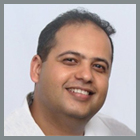
|
Someet Narang view bio | back to agenda
Senior Scientist, MedImmune
Path to Exploring Cell Therapy in Conventional Biopharma
The curative power of cell therapy approaches, such as CAR-T, make them a potentially disruptive technology in the field of immune-oncology. Traditional biopharmaceutical companies are assessing strategic approaches to enter this exciting field. However, this therapy also brings a dramatic change in the type of product, manufacturing process, safety challenges and regulatory hurdles that need to be addressed during product development. A potential path to exploring these new therapeutic modalities where process is the product is to build a collaborative model where in therapeutic area biology, protein engineering and process development teams work in a seamless integrated manner from discovery to manufacturing. In parallel, interactions with the CMOs and vendors that are currently manufacturing cell therapy products or developing new technologies to enable these products will allow us to potentially develop improved next generation processes. An example case study exploring early development of these novel therapies will be presented by MedImmune/AZ. |
 |

|
Arvind Natarajan view bio | back to agenda Day 1 | back to panel
Head, Program Management Office and Strategy, Cell and Gene Technical Development and Manufacturing, Novartis
The Kymriah® Story – Developing and Commercializing the First CAR-T Product
Kymriah® is the first approved commercial T-cell based Chimeric Antigen Receptor (CAR-T) autologous immunotherapy product for the treatment of pediatric and young adult relapsed / refractory (r/r) acute lymphoblastic leukemia (ALL). Kymriah® is also currently being evaluated against several additional hematological malignancies including diffuse large B-cell lymphoma (DLBCL).
The unit operations in the Kymriah® manufacturing processes are substantially different from those utilized in traditional biological products. Cryopreserved patient apheresis material is secured, shipped and thawed where the autologous T-cells are enriched, activated with CD3/CD28 Dynabeads®, and transduced with a lentiviral vector carrying the CART19 transgene. The activated cells are then expanded in static and dynamic culture, harvested, and cryopreserved for shipping and delivery to the treating site for subsequent infusion to the patient.
The complexity of developing and commercializing this novel therapy and process is derived out of several factors:
- autologous product requiring rigorous end-to-end control over chain-of-identity
- manual “high touch”, “high skill” labor-intensive process design
- inherent variability of the patient-specific starting material
- use of other biological agents as starting materials or raw materials (lentivirus vector, human AB serum, human serum albumin, interleukin-2, beads conjugated to CD3 and CD28 antibodies, complex growth medium) in the manufacturing process
- analytical challenges to correlate in vitro assessment of product characteristics to in vivo behavior of product in patients post-infusion
- absence of global standards and regulations, and limited regulatory guidance for cell and gene therapy products
In this presentation, we discuss the impact of critical decisions made during the evolution of the Kymriah® manufacturing process, addressing the complexity described above in designing a highly robust and efficacious product and accompanying supply chain. |
 |
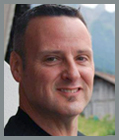
|
David O'Dowd view bio | back to agenda
Associate Director, Draper
Distributed CAR-T Manufacturing to Maximize Market
CAR-T promises to deliver cures for patients with hematologic and potentially solid tumor cancers. However, the current approved therapies are expensive and manufacturing is centralized and complex. Draper is developing an approach incorporating several innovative technologies to a) bring the manufacturing to the hospital, b) allow for consistent autologous product regardless of input material and c) reduce cost sufficient to bring CAR-T forward as first line therapy. |
 |

|
Nigel Pheasey view bio | back to agenda
Principal Scientist, Process Development, Amgen
Adventitious Agent Control Strategy Considerations
As companies advance CAR-T therapies into the clinical and now commercially, a robust adventitious agent control strategy needs to be considered. The strategies should consist of complementary prevention, control, and testing strategies to control the risk of adventitious viral contamination. This is in alignment with regulatory expectations. The strategy to ensure viral safety in the manufacturing process should be based on a multilayered approach considering raw materials, procedures and testing. Various viral mitigation options are available and a proper risk assessment should be conducted to assess the best approach. Some of the considerations to consider for treating media and solutions include high temperature short time, UV-C and viral filtration. This presentation will provide some ideas in advancing these concepts. |
 |
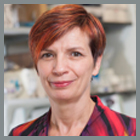
|
Isabelle Rivière view bio | back to agenda | back to panel
Director, Michael G. Harris Cell Therapy and Cell Engineering Facility; Laboratory Member, Molecular Pharmacology Program; Attending Geneticist, Department of Medicine, Memorial Sloan Kettering Cancer Center
Fifteen Years of Driving CARs at MSKCC
We have developed platforms to manufacture T lymphocytes expressing specific chimeric antigen receptors (CARs) that have enabled the successful implementation of multiple phase I/II CAR T cell clinical trials at MSKCC -including 2 multi center trials-. Subjects with leukemia, lymphoma, myeloma, breast cancer, mesothelioma, ovarian cancer and prostate cancer have been enrolled. Over 250 CAR T cell products have been successfully manufactured and approximately 200 subjects have been infused. In order to support these trials, we established early on a robust platform using magnetic beads coated with agonistic anti-CD3 and anti-CD28 antibodies for the selection and activation of T cells, and the Wave/Xuri bioreactor for CAR T cell expansion. We also established our own process to manufacture replication-defective gammaretroviral vectors encoding CARs. This manufacturing platform consistently allows the generation of clinical doses in less than two weeks. Using this platform, the US Food and Drug Administration granted MSK Breakthrough Therapy Designation and Orphan Drug Designation in late 2014, for its CD19-targeted CAR therapy in patients with relapsed or refractory acute lymphoblastic leukemia yielding more than 85% complete remission.
This vast experience provides many insights into addressing the substantial challenges that still remain to be resolved in order to broaden the usage of CAR T cells at the Point of Care and enable the commercialization of this therapeutic modality. A number of these challenges will be illustrated. |
 |

|
Gregory Russotti view bio | back to agenda
Vice President, Cell Therapy Development and Operations, Celgene Corp
Making Cell Therapy Process Changes: Why, How, and When
In order to make process changes for a cell therapy product, one must employ a combination of strong analytical tools, a thorough understanding of how the cell is intended to function as a therapy, detailed process characterization which elucidates how process parameters affect product attributes, and sound engineering principles to understand how the chemical and physical parameters of the process can be controlled to yield a comparable product after the process change. This presentation will discuss the reasons, methodologies, and timing for making process changes for cell therapy products. |
 |

|
Richard O. Snyder view bio | back to agenda
Chief Scientific Officer, Brammer Bio
Considerations for the Manufacture of Viral Gene Transfer Vectors
Gene transfer vector manufacturing for in vivo and ex vivo applications has largely been in support of early phase clinical trials, but as product candidates move to later development stages, demand is rapidly increasing for commercial grade vectors at a variety of scales. Decisions regarding vector design, manufacturing platform, product configuration, and regulatory strategy have an impact on timelines and resources, raw materials sourcing, and analytical testing. Developing a strategy that supports an efficient path to commercialization while reducing risk helps to bring these cutting-edge cell and gene therapies to patients in need. |
 |

|
Austin Thiel view bio | back to agenda
Senior Principal Scientist, Semma Therapeutics
Semma Therapeutics – Developing Disruptive Therapies to Cure Insulin-Dependent Diabetes
Semma Therapeutics was founded to develop transformative therapies for patients who currently depend on insulin injections to treat diabetes. Recent work in the laboratory of Professor Douglas Melton established a method for generating functional, insulin-producing beta cells from a renewable starting material, human pluripotent stem cells. Semma is working to bring this technology to the clinic, and is focused on an allogeneic beta cell replacement therapy as its lead product. Critical steps for the development of this therapy include selection of a cell line suitable for cGMP manufacturing, optimizing directed differentiation, scale-up and the implementation of GMP-grade reagents. Semma is currently focused on developing a process suitable for Phase 1 clinical trials that is scalable for future commercial manufacture. |
 |

|
Krystyn Van Vliet view bio | back to agenda
Associate Provost; Professor, Departments of Material Science and Engineering and Biological Engineering, Massachusetts Institute of Technology
Needles in the Haystack: Label-free, Biophysical Attributes Enabling Cell Therapy
Manufacturing of cell therapies includes the implicit expectation that the cells within the final product exhibit the critical quality attributes which correlate with predictive therapeutic outcomes. In other words, cell populations that are purified from a given donor, expanded and/or engineered to achieve the target cell dosage, and then administered to the patient (who may also be the donor) should be known to be the "right" cell population. Even minimally manipulated cells are subjected to ex vivo culture environments that may inadvertently select for certain subpopulations to thrive during expansion, or may thwart the proper function of those cells prior to administration. For several cell types and indications of interest, the cells that exhibit those critical quality attributes are "rare events", and so technologies that facilitate finding such needles in the cell population haystack can aid qualification of the administered cell dosages for preclinical and clinical trials, and potentially also for scaled manufacturing of approved cell therapy products. Here, we will discuss two such "needle in the haystack" challenges in emerging stem and progenitor cell therapies, and discuss how we have leveraged biophysical attributes of those cells and cell-material interactions to (1) define and administer the cell population that correlates with in vivo efficacy; and (2) prime the cell populations in vitro toward the in vivo application of interest.
|
 |

|
Lance Weed view bio | back to agenda
Vice President Operations, uniQure
Considerations and Challenges When Establishing a New Manufacturing Facility
uniQure’s Lexington-based facility is one of the largest, most versatile gene therapy manufacturing facilities in the world. Over the past four years, uniQure has invested more than $25 million in designing, constructing and equipping its 55,000 square-foot facility with state-of-the-art laboratories and commercial-scale production capabilities. The facility offers 500-liter capacity with the ability to expand to up to 2,000 liters when needed. This presentation will discuss the challenges in establishing a new manufacturing facility from scratch, and what small companies should consider when deciding whether to build their own manufacturing capability or use contract manufacturing.
|
 |
|
|
|